Busy Bumblebees At Barleycorn
 Everyone knows that bees and bumblebees are important for the environment, for without them, there would be no flowers, trees, shrubs, fruits and vegetables.
Everyone knows that bees and bumblebees are important for the environment, for without them, there would be no flowers, trees, shrubs, fruits and vegetables. 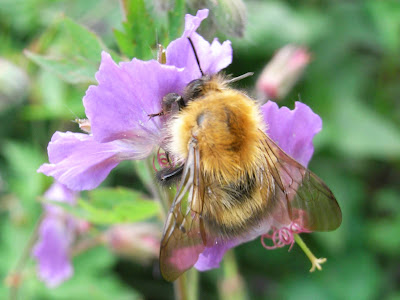 We all know that wildflowers and crops depend on the endearing, humble bumblebees , so it is up to farmers and conservationists, and we keen gardeners to do what we can to help their plight, for, surely, we are all the stewards of the earth.
We all know that wildflowers and crops depend on the endearing, humble bumblebees , so it is up to farmers and conservationists, and we keen gardeners to do what we can to help their plight, for, surely, we are all the stewards of the earth.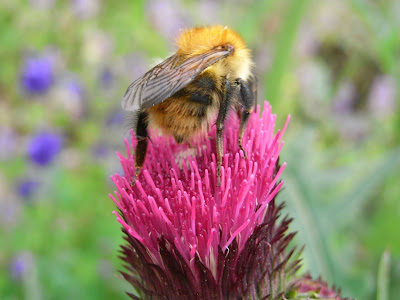 Unlike the honey bee - a distant cousin of the bumblebee - the humble bumble is gentle and slow, trundling around the garden collecting nectar and pollen. The streamlined honey bee, on the otherhand, dashes about all over the place.
Unlike the honey bee - a distant cousin of the bumblebee - the humble bumble is gentle and slow, trundling around the garden collecting nectar and pollen. The streamlined honey bee, on the otherhand, dashes about all over the place.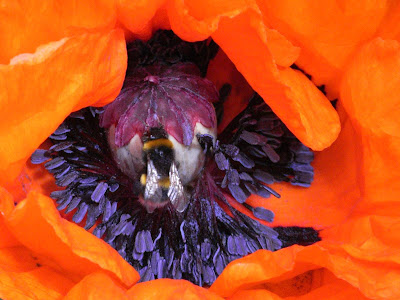 There are over two hundred different types of bumblebee which live in a variety of sites such as amongst leaf litter, in an old mouse hole, under large stones or under the wooden floors of a shed. The nest is about half the size of a small grapefruit and will normally contain about six eggs.
There are over two hundred different types of bumblebee which live in a variety of sites such as amongst leaf litter, in an old mouse hole, under large stones or under the wooden floors of a shed. The nest is about half the size of a small grapefruit and will normally contain about six eggs. Made of wax produced from special wax-glands on their body, the nest is a comb with a few brood-cells and is often protected inside animal fur or moss or grass. If you happen to find one when turning over the soil, just replace it and the bees will repair any damage.
Made of wax produced from special wax-glands on their body, the nest is a comb with a few brood-cells and is often protected inside animal fur or moss or grass. If you happen to find one when turning over the soil, just replace it and the bees will repair any damage.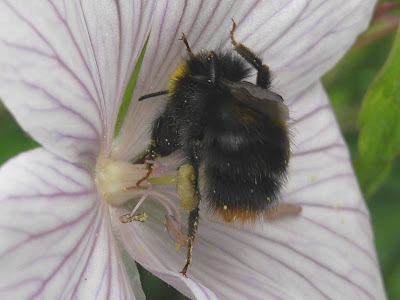 The drones, which are the males, do no work in the colony, and spend their time mating with other queens from other colonies, after which they die. Once they are fertilised the queens leave the nest and begin their winter hibernation.
The drones, which are the males, do no work in the colony, and spend their time mating with other queens from other colonies, after which they die. Once they are fertilised the queens leave the nest and begin their winter hibernation.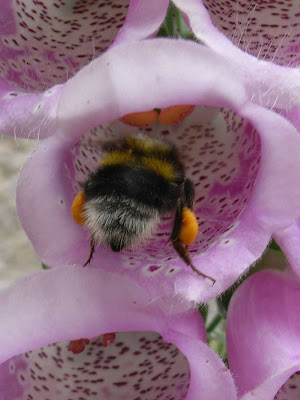 All the fairly large bumblebees we see in our gardens in early spring, foraging on the early crocus, anemone blanda and other spring bulbs, are the young nesting queens which have overwintered and are looking to build new nests.
All the fairly large bumblebees we see in our gardens in early spring, foraging on the early crocus, anemone blanda and other spring bulbs, are the young nesting queens which have overwintered and are looking to build new nests. A healthy grown up busy busy bee;
Whiling away all the passing hours
Pinching all the pollen from the cauliflowers.
I'd like to be a busy little bee,
Being as busy as a bee can be.
Flying around the garden brightest ever seen,
Taking back the honey to the dear old queen.
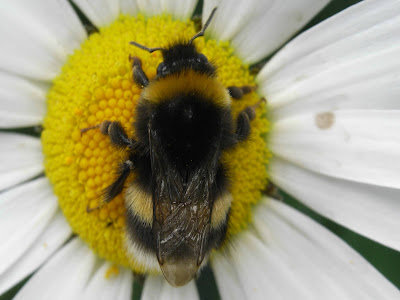 Where the bee sucks, there suck I,
Where the bee sucks, there suck I,In a cowslip's bell I lie;
There I couch when owls do cry,
On the bat's back I do fly
After summer merrily.
Merrily, merrily, shall I live now,
Under the blossom under the bough.
Why hello, Mr Bee,
Can you please show me your dance?
Why hello, Mr Bee
I believe this is my chance
Why hello, Mr Bee,
Won't you please dance now with me?
Why hello, Mr Bee
How I'd like to be a bee.
We would dance through the flowers,
We would dance through the trees,
We would dance over hayfields,
We would be the bees-knees.
We would dance round the gardens,
We would dance through the trees,
We would dance over cowslips,
We would be the bees-knees.
There is a little video of bumblebees below. Turn up the sound for the best buzz!
xxxxxxx
Here are two sites with information on how to attract bumblebees into your garden.
xxxxxxx
List of plants
Persicaria Bistorta superba, Polygonum 'superbum', bistort
Pink Helianthemum, rock rose
Geranium Phaeum, cranesbill
Cirsium Rivulare Atropurpureum, thistle
Leucanthemum vulgare, ox eye daisies
Centaurea Montana, perennial cornflower
Papaver Orientalis, red Oriental poppy
Geranium Macrorrhizum Album, white geranium
Yellow Perennial Potentilla
Geranium Clarkeii, blue-veined white geranium
Alstromeria, Peruvian Lily (very invasive!)
Digitalis, common foxglove
Geranium Psilostemon
Allium Christophii
Geranium Magnificum
Chaenomeles Japonica
Lonicera Belgica, honeysuckle
Blue iris
Anthemis Daisies
xxxxxxx
Don't forget to watch the charming little video of bumblebees just below this post.





















